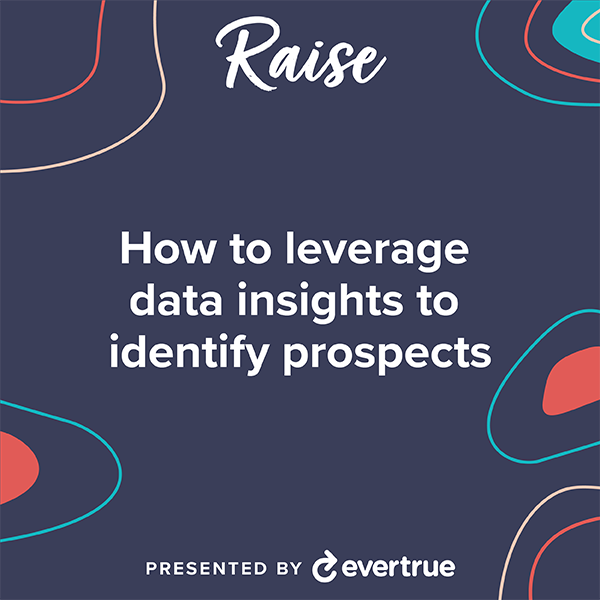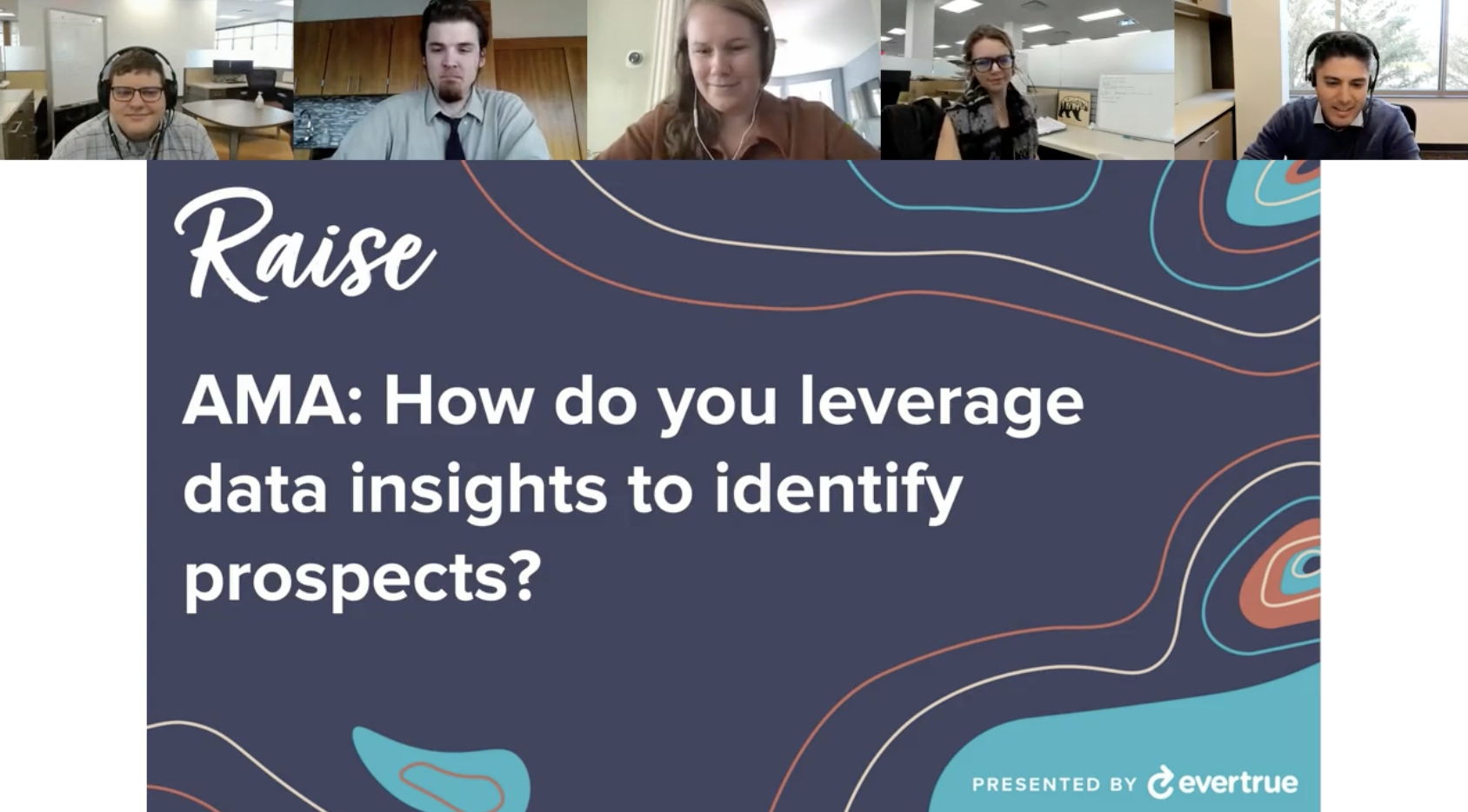The University of Wyoming Foundation prospect research team has the right people in the right seats, processes to power consistent and proactive prospecting, and clear KPIs to measure their performance. They’re funneling hundreds of new prospects to gift officer radar every month.
Then read on to hear our top takeaways on the strategy they’re executing.
In the first year of the Donor Experience Program at the University of Wyoming, the team doubled the number of prospects under management and increased activity by 2000%. As a result, they saw a 71% increase in giving among prospects in a DXO portfolio…and over $7MM was raised in revenue from DXO asks alone.
But… how did these prospects make their way into a DXO portfolio? How are the people with the perfect combination of affinity, wealth capacity, and engagement identified? How are new prospects brought to the attention of DXOs?
Enter: The DX Discovery Program.
The Donor Experience Discovery Program at UW powers and formalizes the prospecting process to get more prospects into MGO and DXO portfolios.
On a monthly basis, the UW Prospect Research team identifies the top 10 prospects that they feel are in need of outreach from a DXO. The DX Discovery Program has resulted in multiple major gift conversations and constant collaboration between prospect research and frontline fundraisers at the Foundation.
We recently sat down with the prospecting wizards from the Wyoming research team to learn more about what that looks like in practice. Read on, and view the webinar on-demand, to learn you can implement a similar process at your institution.
How did the DX Discovery Program come to be?
In 2019, the UW Prospect Research team met with major gift officers on a bi-quarterly basis to assign new folks to their portfolios and suggest removals. What they found was a big surplus of prospects: folks who had a great giving velocity, history of gifts, promising historic interactions with gift officers. unassigned and unmanaged. So much opportunity.
The problem was that there was no place to funnel these folks. MGO portfolios were already packed, and only the highest rated and highest capacity prospects made it to their radar.
To start tackling this surplus, the UW prospect research team began assigning one prospect per week to Doug Hammond,their call center manager (Doug is now one of their star Donor Experience Officers). They wanted to prove the value of something like a DXO program…and it worked.
From there, things ramped up substantially. Hundreds of people were being assigned (an average of 25 people a week for 18 months in a row) for DXO outreach..
Once UW’s official Donor Experience program was established in partnership with EverTrue , the research team met with the program’s three DXOs each month to present 10 highly-vetted handpicked prospects they had found through a variety of means.
So, where do the prospects come from?
The University of Wyoming Prospect Research team filters constituents into three different buckets during their prospecting process:
First Bucket: DOD (Directors of Development) Prospecting (aka major gift fundraisers)
- This bucketincludes prospects that have been assigned to a DOD portfolio but may need to come off for a variety of reasons, most commonly that the MGO does not have the bandwidth to have a qualification conversation with the prosepect. Or they may have once made a connection, but then didn’t have time to pursue a relationship further. In this case, the research team decides whether they’re a good candidate for the DX program, and thus a “DOD referral” is created.
- This bucketincludes prospects that have been assigned to a DOD portfolio but may need to come off for a variety of reasons, most commonly that the MGO does not have the bandwidth to have a qualification conversation with the prosepect. Or they may have once made a connection, but then didn’t have time to pursue a relationship further. In this case, the research team decides whether they’re a good candidate for the DX program, and thus a “DOD referral” is created.
Second bucket: Prospect list mining
- These constituents are pulled in via data mining scripts. Thousands of unassigned prospects are identified by looking at different indicators that may make them a good candidate for a major gift – like wealth capacity, past giving history, overall affinity. That information is cross-referenced with EverTrue data in the early stages to identify the best-of-the-best to add to a DXO’s caseload.
Third Bucket: Manual Prospecting
- These are individuals that people on the team have come across through a variety of means like:
- Weekly gift reports: Every week the team looks through lists of folks who have made a gift of $250 or more to suss out potential leads
- Conversations with peers
- Email exchanges
- Anecdotes from frontline fundraisers
- News sources (from campus, Google alerts, etc)
- These are individuals that people on the team have come across through a variety of means like:
The team focuses on top-tier prospects by drilling down on affinity indicators like: giving velocity, likelihood scores, wealth capacity, biographical history, and past contacts. They work on finding as many picture-perfect prospects as they can.
With intentional, proactive, and data-driven prospecting, the DX Discovery Program is thriving.
The UW research team takes constituents with leadership giving or major gift capacity who have really strong affinity, and assigns them for DXO outreach. Each DXO is given 10 new prospects per month, and 3-5 of those prospects are identifies as ones to really focus on.
By combining major gifts with annual giving outreach, and not siloing donors into one category, it allows for cross-team collaboration and ultimately better results. DXOs are able to keep prospects warm by utilizing the technology at their disposal, and the cadences laid out for them which tell them how many people to connect with and when.
If major gift officers don’t have the capacity to regularly engage people during the discovery phase, the research team takes those prospects who aren’t getting the attention they need, and hands them over to a DXO. The DXOs are able to make connections, follow their cadence outreach, and build relationships with more donors.
How do they know it's working?
Donor engagement is the team’s ultimate indicator of success. There is a significant number of constituents that are getting contact from a DXO (the UW team has doubled the number of assigned prospects in portfolios)
The team also gauges the success of the DX Discovery Program via the gifts that come through as a result of their initial identification process. DXOs have seen success both in upgrading constituents’ annual gifts and uncovering new major gift opportunities. When the research team makes the decision to remove a stale prospect from an MGOs portfolio and add them to a DXO portfolio, and then the DXO closes a gift almost immediately, they know they are on the right track.
And, of course – there are incredible stories like UW alumna Lisa Yu’s, which is highlighted in our latest documentary A Story Untold. As the team noted, Lisa was one of over 100,000 overlooked donors before they layered insights in EverTrue, saw untapped potential, and assigned her for DXO outreach. Lisa had historically given a small gift to a niche program on campus, but the research team realized she might have more affinity ready to engage. They brought her name to the DXOs through their standard discovery process…and well, you’ll have to watch this 6-minute documentary for the rest of the story..
Consistency, communication, and data-driven prospecting lead to stories like Lisa’s. Go Pokes!

